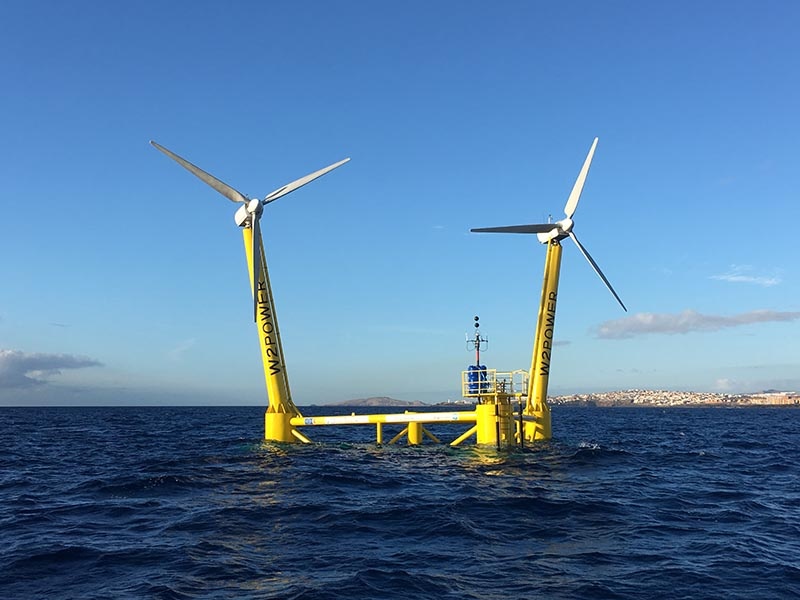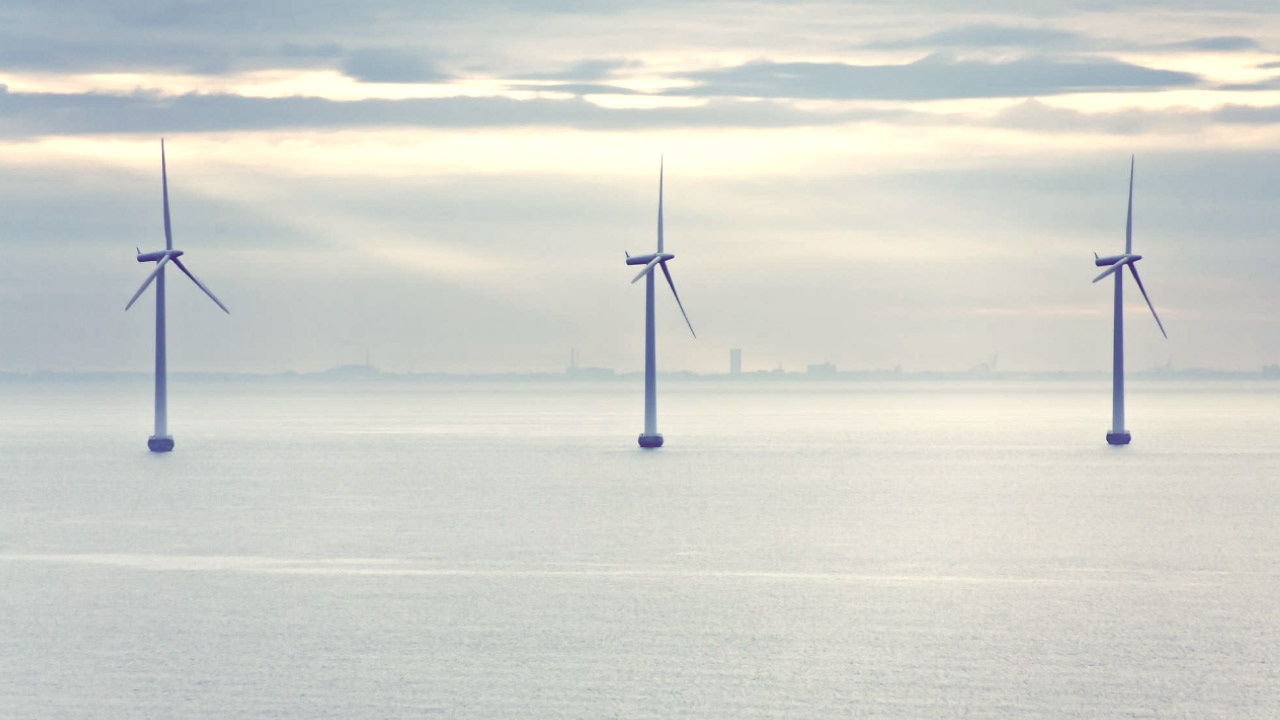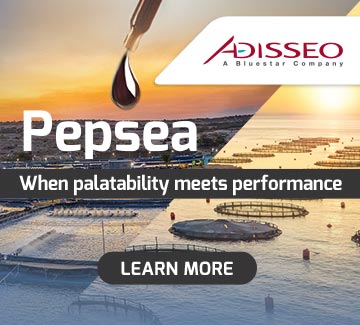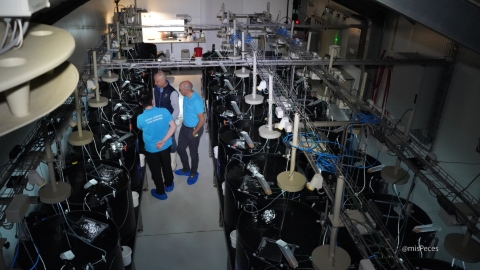
In a time when renewable energy and sustainable food production are global priorities, innovative solutions combining aquaculture and offshore wind energy are emerging to maximise the potential of our oceans.
Researchers from the University of Porto, in Portugal, in collaboration with Hohai University in China, have conducted an in-depth analysis of co-locating aquaculture farms within offshore wind parks. This approach not only optimizes the use of marine spaces but also reduces costs and mitigates the environmental impacto of both industries.
The integration of systems such as fish cages, seaweed cultivation, and mussel longlines between wind turbines not only produces food but also enhances the hydrodynamic stability of these structures, according to a study published in Ocean Engineering. Furthermore, pilot projects like UNITED in Europe and Mingyu-1 in China are already demonstrating the feasibility of this innovative approach.
Project Integrating Offshore Wind Energy and Aquaculture

In addition to UNITED and Mingyu-1, several pilot projects across Europe are leading the way in combining these economic activities.
The Edulis project, spearheaded by Belgium, focuses on mussel farming and demonstrates how cultivation lines can coexist with wind farms in Belgian waters, optimizing the use of marine spaces.
Aquawind, based in Las Palmas de Gran Canaria, Spain, combines floating wind platforms with fish cages to cultivate species such as gilthead seabream and greater amberjack.
In the Netherlands, North Sea Farm 1 is a pre-commercial project that utilizes seaweed lines within the Hollandse kust Zuid wind park in the North Sea. If successful, it is expected to scale up to a full commercial operation by 2028.
Another ambitious European project, ULTFARMS, aims to improvement low-impact aquaculture systems, such as seaweed and mussels farming, at six locations in the North Sea and the Baltic Sea.
These projects not only highlight the technical feasibility of this concept but also provide invaluable insights into overcoming regulatory and logistical challenges faced by this innovative alliance.
Aquaculture and Offshore Wind Energy: Advantages, Challenges, and the Future
The combination of aquaculture and offshore wind energy offers numerous advantages, making it a sustainable and efficient solution. By integrating these activities, marine space can be optimized, using areas that would otherwise remain unused. Additionally, shared infrastructure significantly reduces operational and logistical costs.
From an environmental perspective, this union minimizes the impact on coastal zones and enhances marine ecosystems by mitigating issues such as eutrophication and protecting seabeds from erosion. Co-location also diversifies economic opportunities, benefitting both the aquaculture and renewable energy sector, while providing a sustainable alternative for fishing communities facing resources depletion.
Furthermore, it enables the use of clean energy in aquaculture, reducing dependence on fossil fuels, and extends operational windows by lowering wave heights and currents, facilitating turbine maintenance. Collectively, this integration drives the development of the blue economy and represents progress towards a sustainable model for maritime industries.
However, the lack of clear regulations, collision risks, and the need for more detailed studies on seabed impacts remain significant obstacles to the widespread adoption of this model. Yet, the vision is clear: the combination of offshore wind energy and aquaculture holds the potential to revolutionise maritime sustainability.
With innovative projects underway and growing global interest, the future of this collaboration promises a significant step towards achieving the United Nations’ Sustainable Development Goals. For experts, this partnership represents a milestone in the management of marine resources and a unique opportunity to foster the blue economy.


